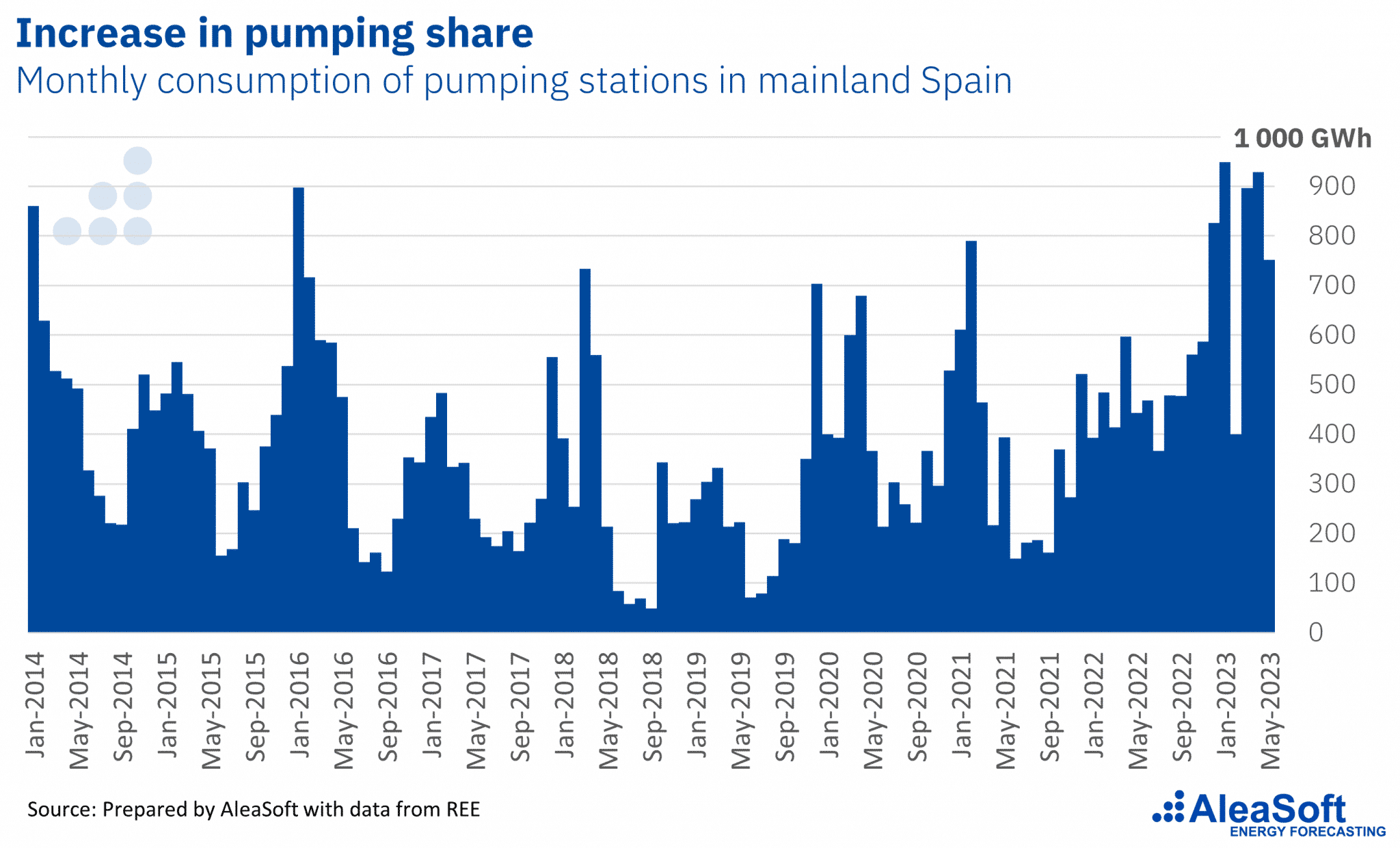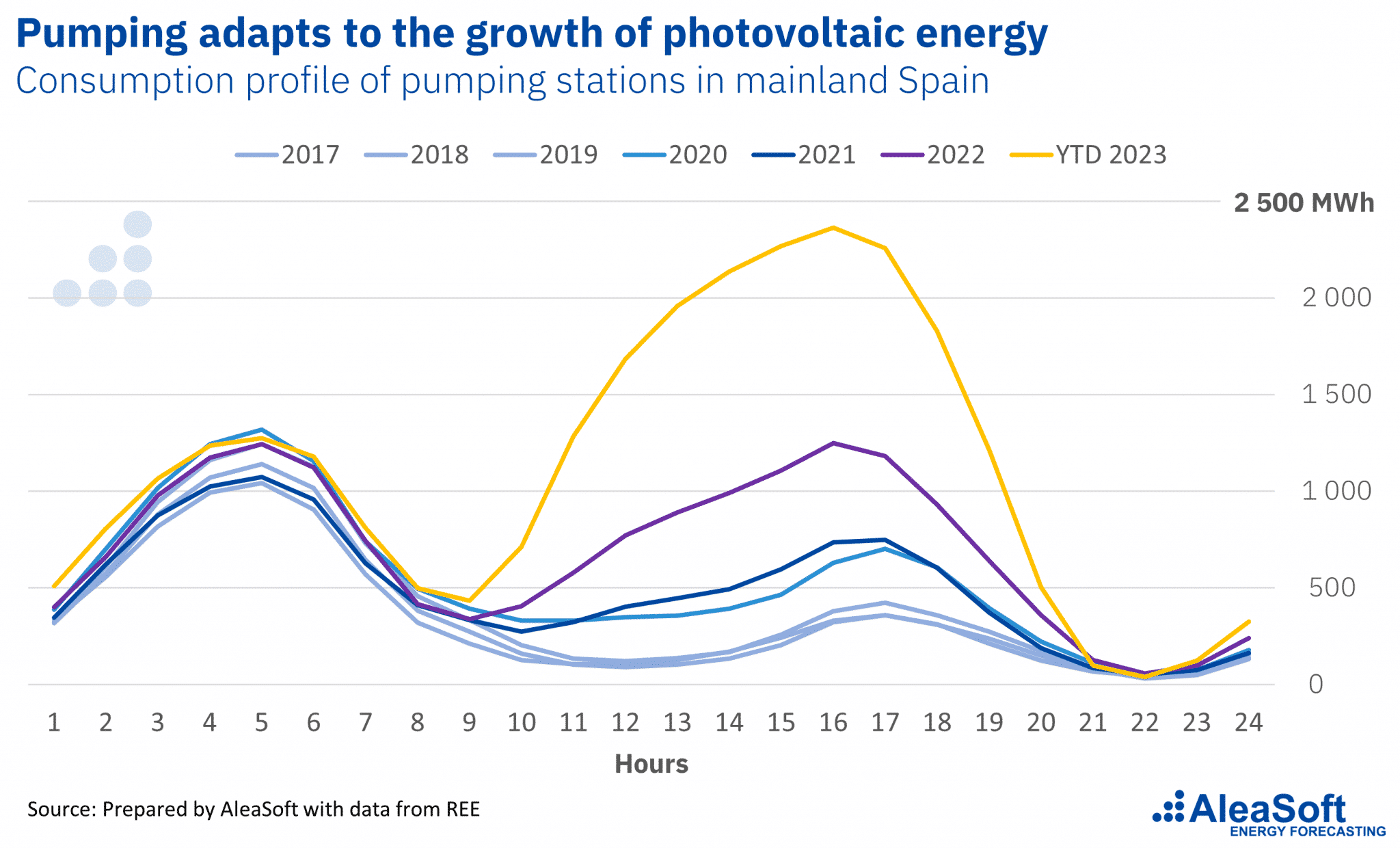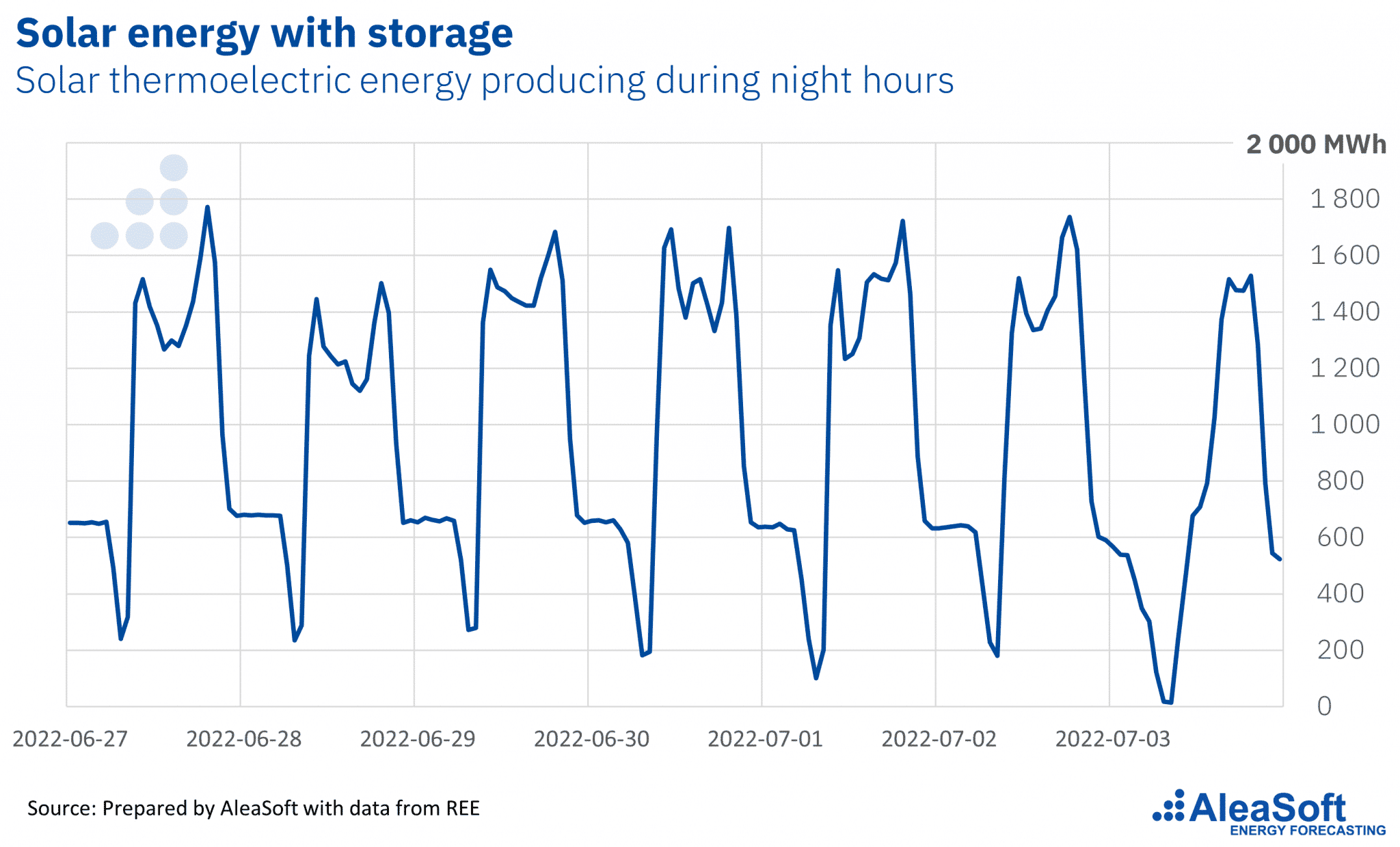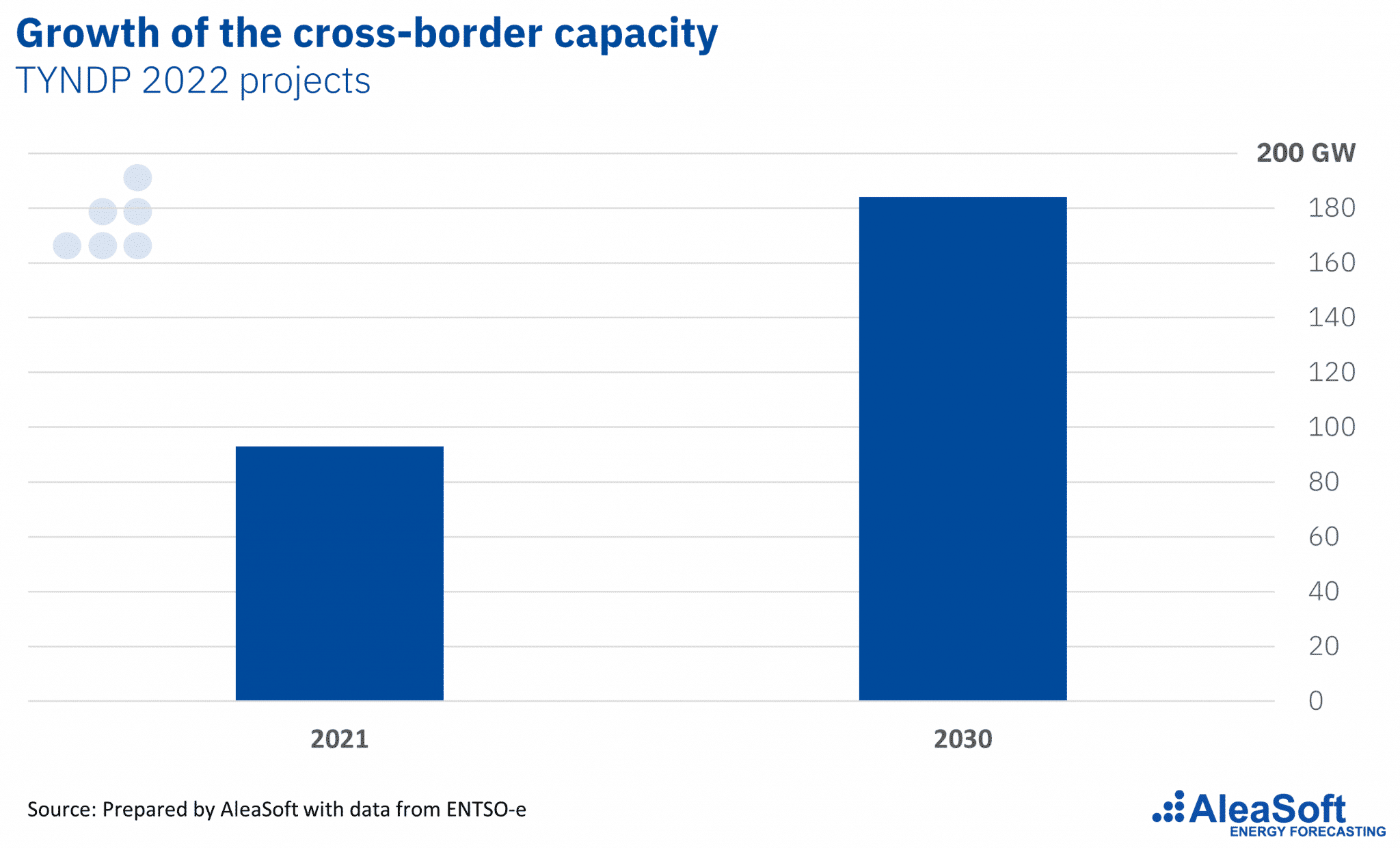AleaSoft Energy Forecasting, June 9, 2023. In this second instalment of the news series on the main vectors of the energy transition, five more vectors are analysed. Three of them are related to energy storage (batteries, pumping stations and solar thermoelectric energy), and the other two are international interconnections and smart grids.
In the first instalment of this series of three news items, five of the fifteen fundamental vectors in the energy transition were analysed. In this second instalment, other five key factors and their role in the energy transition towards decarbonisation and zero emissions are analysed.
Battery storage systems
It is obvious that with a 100% renewable energy system, where the main energies will be wind and solar energy, solutions are necessary to manage and make flexible renewable energy production that will be intermittent. Among the solutions are energy storage technologies and, of these, three stand out that will play a key role in the energy transition: batteries, pumping stations and solar thermoelectric power plants.
Batteries are the technology that first comes to mind when thinking about energy storage. Batteries are already the most widespread solution for small‑scale storage for mobile and portable devices that need to operate isolated from the electricity grid. However, batteries are also a storage solution on a medium scale in homes, communities or industries, and also on a large scale in regional or national electricity systems.
Batteries are an optimal solution for short‑term energy storage, to consume, store and inject electricity in intraday cycles. The most common cycle is storing part of the solar energy production during the central hours of the day and injecting it into the grid during the peak of demand that occurs at night when solar radiation decreases.
The National Energy and Climate Plan in Spain (NECP) estimates that 2.5 GW of batteries will be available in 2030, although many studies estimate that at least three times more would be necessary given the amount of renewable energy that is expected to be available in 2030.
Storage with pumping stations
But when talking about the present, the energy storage of the grid in Spain is carried out by reversible hydroelectric plants, commonly known as pumping stations. These plants are capable of consuming energy from the electricity grid to pump water from a lower reservoir to another reservoir located at a higher altitude, to, at a later time, drop the water back into the lower reservoir and generate electricity with a turbine. All this with efficiency close to 70%.
In recent months, pumping has gone from having a marginal role in the Spanish electricity system, to participating actively with its energy storage capacity. This change has been possible thanks to the price spread that has appeared in the hourly prices of the Iberian electricity market. In the hours when the price is set by combined cycle gas turbine plants, prices are high due to the high gas and CO2 prices, while, in the most central hours of the day, when renewable energies can set the prices of the market, prices fall to very low values. In this way, pumping stations can consume energy at low prices and produce it again at times when prices are clearly higher.

The consumption profile of pumping stations in Spain has changed radically in recent years. Historically, the lowest prices in the Iberian electricity market were registered at dawn, when the demand was lower. Pumping stations took advantage of those hours to consume most of their energy at competitive prices.
Since 2020, this consumption profile focused on the early morning hours began to change. As the increase in photovoltaic energy production began to push prices in the central hours of the day towards lower values, pumping began to consume more in those hours, and so far in 2023, the profile is practically reversed, with most of the consumption concentrated in the hours with the highest solar energy production.

Solar thermoelectric energy
In areas with a lot of solar energy radiation and for many hours, the solar thermoelectric energy is an ideal solution to make an intermittent energy such as solar energy manageable. The concept is simple, heating a mass of molten salts during sunny hours by concentrating the radiation with mirrors and using the heat stored in the salts to drive a turbine that generates electricity.

The ability of the salts to retain heat for a few hours allows continuing producing electricity during the first hours of the night, when there is a peak of electricity demand and when the solar photovoltaic energy is not available.
In Europe, the solar thermoelectric energy is a solution for regions such as the Iberian Peninsula, Greece or the southern half of the Italian peninsula. These regions have the potential to exploit a solution that is renewable and allows storage.

International interconnections
A 100% renewable energy system in Europe will need to have a large capacity for energy exchange between different countries and markets. With the energy exchange, countries will be able to export surplus renewable energy at times of higher production and import energy at times of higher demand. The fact of having a single electricity system at a European level with a large exchange capacity will allow renewable energy production, which is normally complementary both at a north‑south and east‑west level, to be transferred at all times to the points with the largest demand, without congestions nor energy curtailments.
Having sufficient interconnection capacity between markets will also reduce the storage needs of each individual country. Currently, the cross‑border capacity in Europe is 91 GW and, according to ENTSO‑e, the projects planned for 2030 would double this interconnection capacity.

Smartgrids
The integration of all new renewable energy production in the generation mix, while maintaining the security of supply for the entire system, will require management systems capable of monitoring and responding adequately to increasingly decentralised production and consumption that will become more flexible to respond to price signals. Here is where the smartgrids are going to play an important role, collecting and analysing in real time and intelligently, as their name indicates, all this information and managing and maintaining the balance of production and consumption at all times.
AleaSoft Energy Forecasting’s analysis on the prospects for energy markets in Europe and the financing and valuation of renewable energy projects
In the second week of June, a new edition, number 34, of the monthly webinars of AleaSoft Energy Forecasting and AleaGreen took place. On this occasion, there was again the participation of speakers from Engie Spain who contributed their vision and vast experience in the financing of renewable energy projects and PPA, and the main regulatory issues of the Spanish electricity sector and the evolution and prospects of European energy markets in the second part of 2023 and during the coming winter were analysed.
Source: AleaSoft Energy Forecasting.
